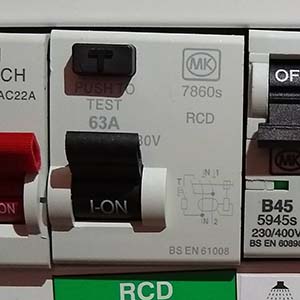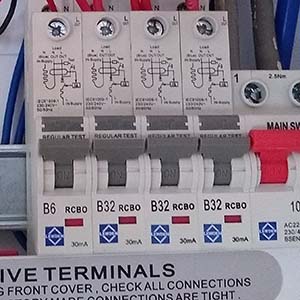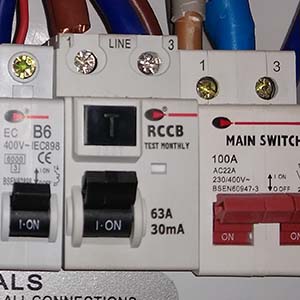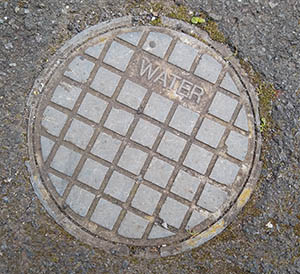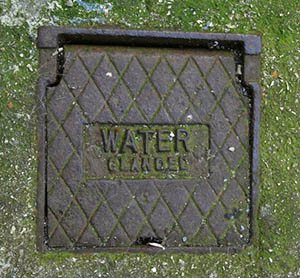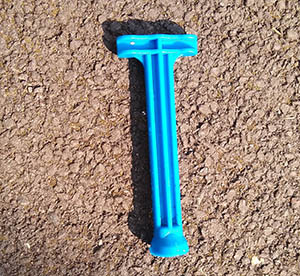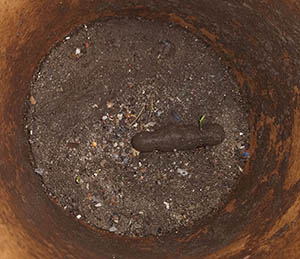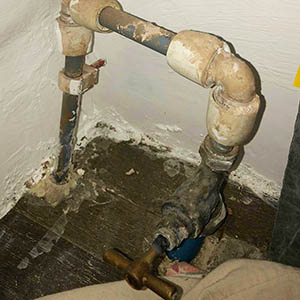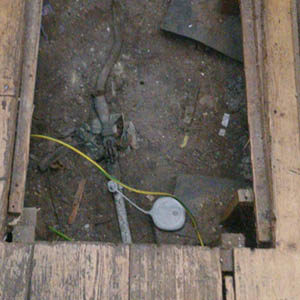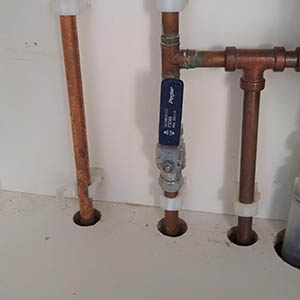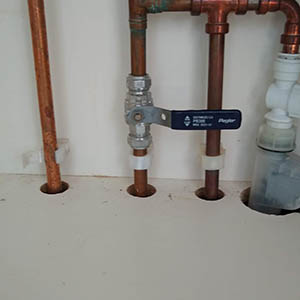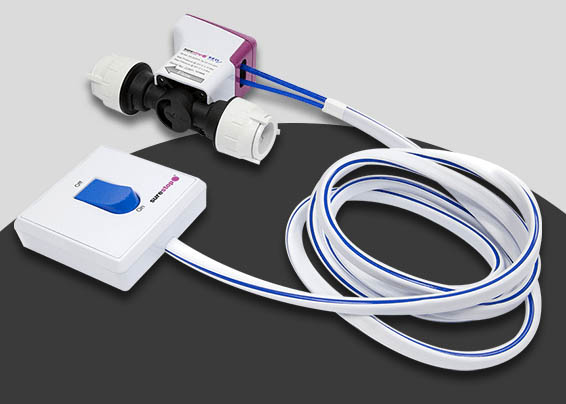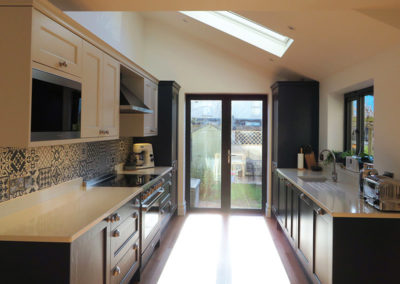
How to reset an RCD
What is an RCD?
A Residual Current Device is a safety device which is now, fortunately, pretty common in most domestic electrical supplies.
If you’re not sure whether you have one, it should look something like this:
There will usually be a small reset button on it, sometimes red or yellow.
It will either have RCD, RCCB or RCBO written on it.
How does an RCD work?
An RCD measures the current in the circuits that it controls. It measures the current leaving and returning. If there is an imbalance, it assumes that some of the current has leaked out and is causing a danger. The current is immediately (or, at least within 300 milliseconds) switched off and there is no longer any power.
How do I reset an RCD?
RCDs are designed to be reset. Sometimes they trip for no apparent reason. They can be tripped by a lightbulb blowing. It isn’t always an indication of a problem.
If the lever on an RCD is in the DOWN position, it is off. To reset it, the lever simply needs to be pushed back UP. For some RCDs, it is necessary to push the lever fully downwards before it will let you push it back UP and reset.
In many cases, this will be fine. The RCD will reset and all will be well. However, if there is a fault on your system somewhere, the RCD may not reset, or may reset temporarily, only to trip again a few seconds/minutes/hours later. If this happens, then you may well have a problem which needs to be addressed. The RCD is telling you that something is not right and you need to investigate.
To work out whether this is something which you can resolve yourself, or whether you need to call in an electrician, there is a simple procedure to follow.
My RCD won’t reset. What should I do?
- If you were in the house when the RCD tripped, ask yourself what happened just before the RCD tripped. If you had just turned the Kettle on, or switched on the Iron, there’s a possibility that this may be the cause of the problem. Fully unplug the Kettle/Iron and reset the RCD. If the RCD resets and stays reset, then you have probably found your culprit.
- If you just drilled through a wall and the RCD tripped, there may be a strong link between the two events. It is quite possible that you may have drilled through, or otherwise damaged a cable. If you didn’t check the positions of cables prior to drilling, you have just learnt a useful, but possibly quite expensive lesson. Its time to call in an electrician to repair the damaged cable as soon as possible. It is quite likely that the RCD will not reset until the damage has been repaired.
Next time you get the drill out, it would be worth checking out one of our other posts on the inappropriately named Safe Zones. Contrary to their name, these are areas where it is actually dangerous to drill, as they could legitimately hide cables.
If you look at the Safe Zones post and realise that you did, in fact, drill straight into one of these safe zones, please call an electrician as soon as possible. There may be some brown scorch marks, or even a bit of smoke coming out of the hole – all signs that things are not well.
How to identify the cause of a fault
If neither of these scenarios applies and the RCD seems to have tripped for no reason at all, there is a straightforward procedure to follow, which in most cases will identify where the problem lies.
Stage 1
Your Consumer Unit should be properly labelled. The RCD will be labelled and the fuses (or MCBs) controlled by it, also labelled. Hopefully it will look something like this:
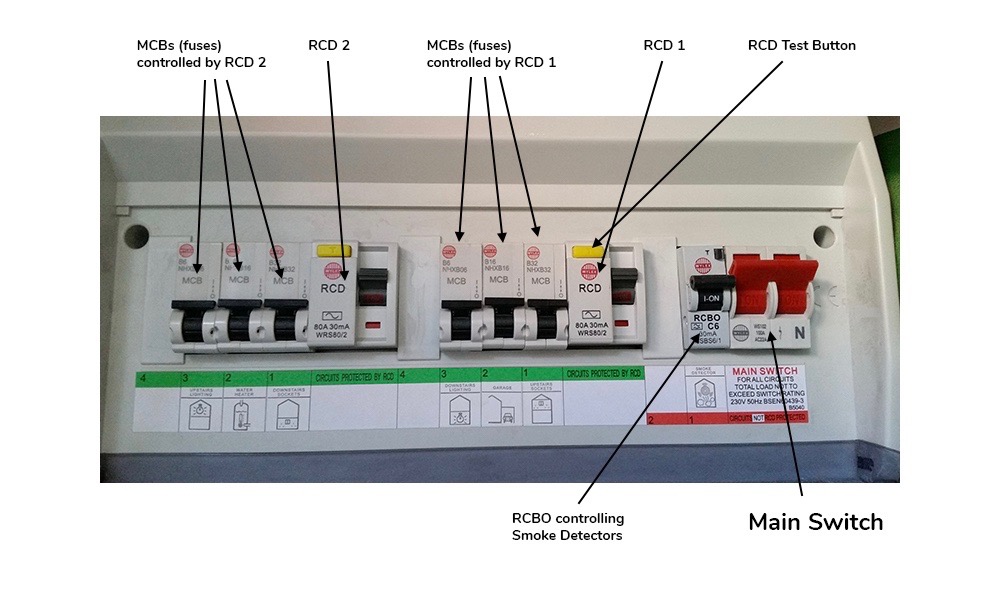
Make a note of the names of the circuits which are covered by the RCD.
Firstly switch off the RCD and all the fuses (MCBs) controlled by it. All the levers should be pointing DOWN
In this case, lets imagine that RCD 2 is the problem. The circuits covered by RCD 2 are:
- Downstairs Sockets
- Water Heater (Probably the Boiler)
- Upstairs Lights
Turn off all those fuses (Lever pointing DOWN). Then unplug everything that is plugged into the Downstairs Sockets.
If the Boiler is also not working, and you don’t have an immersion heater in your house, it is quite likely that the “Water Heater” circuit applies to the Boiler. If it is plugged in, pull the plug out. If it has a fused spur, then pull the fuse out of the fuse holder on the fused spur.
At this point, still with all the fuses turned off, try to reset the RCD. If the RCD stays in the ON position, then you have successfully completed Stage 1.
Stage 2
Now, we need to identify which circuit is causing the problems.
Start with the Downstairs Sockets.
First turn on the fuse (MCB) for the downstairs sockets, and see if the RCD also stays on.
If it doesn’t stay on, check that you have definitely unplugged everything on that circuit.
- Might there be something plugged in in a cupboard that you had forgotten about?
- Is there an outside socket?
- Are the lights under the kitchen cabinets run from a fused spur in the Kitchen?
It is very easy to miss something at this stage, so you may have to really rack your brains. Cooker Hoods are an easy one to miss.
If you are pretty sure that everything has been unplugged and you still can’t reset the RCD, it is time to call an electrician. This scenario (which is pretty unlikely) would suggest that there may be a problem with the wiring or something on the circuit.
If the RCD remains on, then go round and plug in each of the appliances that you previously unplugged. Switch each one on. If at any stage, the RCD trips, you have found your culprit.
If the RCD remains on while you plug everything back in, it appears that the problem isn’t on this particular circuit.
Stage 3
Move on to the next circuit and do the same thing.
In this case, it is the boiler circuit, so it will just be a case of putting the fuse back in and switching the boiler on.
If the RCD trips at this point, there could be an issue with the boiler. Take a look to see if there are any signs of water under the boiler. A leak from a boiler onto the controls is a common cause of this kind of problem. If you suspect that this is the case, you need to call a Gas or Boiler Engineer.
Stage 4
Finally turn on the third circuit. In this case, it is the Upstairs lighting Circuit. To save time, you have left all the light bulbs in their fittings. If the RCD trips when you turn the fuse (MCB) for the lights back on, take all the lightbulbs out, just in case one of them is causing a problem, and switch the Fuse back on.
If the RCD stays on, put each light bulb back into its fitting in turn. For safety’s sake, make sure that you turn the fuse (MCB) off each time that you put a bulb in, and turn it on once the bulb is in position. If the RCD trips when you put one of the bulbs back in, then that will be your culprit.

